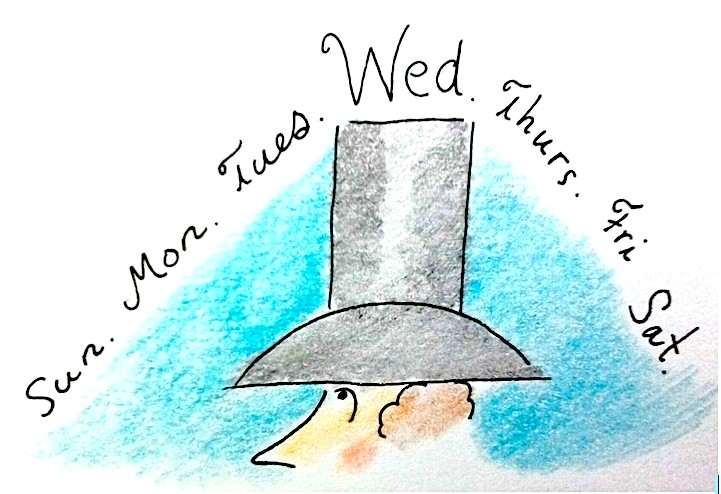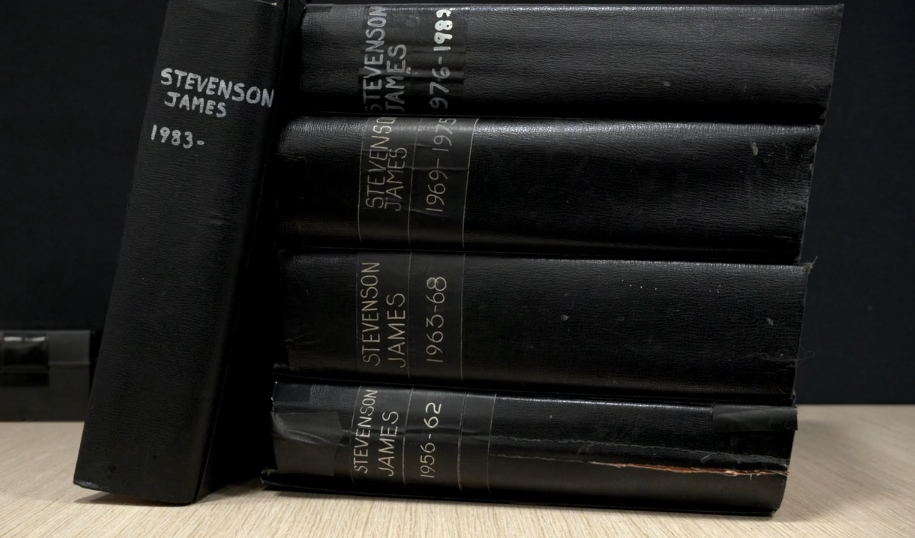50 Years Ago This Week In The New Yorker
It’s always fun time traveling through The New Yorker‘s archives. This morning I took a look at the issue of April 28, 1975. The truly wonderful cover is by the late great James Stevenson. Mr. Stevenson was one of the handful of The New Yorker’s jack-of-many-departments contributors. Before becoming a full-time cartoonist, he had a “secret job” at the magazine. Besides cartoons and covers, he also contributed Talk pieces, oftentimes they were illustrated. Stevenson was one of the most prolific of all the magazine’s contributors. Who can forget this shot of his piled-up New Yorker scrapbooks, in the Sally Williams documentary film, Stevenson Lost And Found:
I love the issue’s cover. It’s a reminder of cover art as described by William Steig: “For me, a cover is a moment of Haiku — a special moment, fleetingly observed.” In this case a peaceful moment one morning in a coffee shop. As was the custom in those pre-Tina Brown years, the cover had nothing to do with the contents of the magazine:
Once I got my foot in the door at the magazine (a couple of years after this April issue was published), I ended up meeting every one of the artists in this issue (James Mulligan, William Steig and Whitney Darrow were the exceptions, altho I had close encounters with Steig and Darrow; I was perhaps too intimidated to reach out my hand and introduce myself). Of the issue’s 20 cartoonists — all masters of the art — I’d like to point out work by three:
This great Lee Lorenz captionless drawing. Lorenz’s drawings were spectacularly humorous in and of themselves.
This one by Jack Ziegler. His 20th cartoon in the magazine (he’d eventually contribute well over 1,000). Delightfully funny and friendly. The bulging cheek on the guy getting socked in the stomach never fails to elicit a laugh from me.
And finally this somewhat unusual George Booth. Unusual in that at first glance you might not take it for a Booth. The big fellow speaking, the sheep, the dog, and the fellow standing with the shepherd’s crook are classic Booth characters, but the army that fills up the rest of the drawing looks more in the Dana Fradon school of drawing. Not sure I’ve ever seen such a graphically massive Booth drawing. Bravo!
This issue also contains Otto Soglow‘s obit (unsigned, as the obits were back then, but we know it was written by William Shawn). Here, in part, is how Shawn described Soglow and his work:








